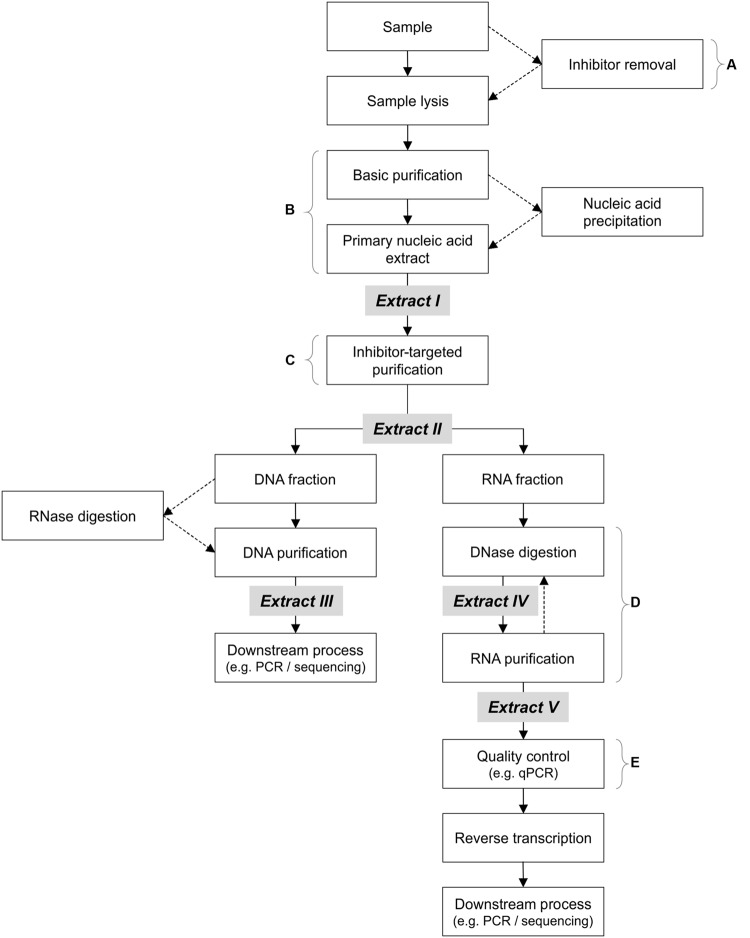FIGURE 2.
Suggested DNA/RNA co-extraction workflow for environmental samples, with stronger emphasis on thorough purification prior to all enzymatic steps (including DNase digestion). Optional steps are indicated by dotted arrows. Note that RNase digestion (between Extracts II and III) may be necessary for better results downstream, but may be omitted as a separate step (in the current study, RNase is present in the qPCR mix). (A) Pre-lysis inhibitor removal is only advisable if quick methods are used, or if mRNA is not the target molecule (lengthy inhibitor removal procedures compromise RNA integrity). (B) Various methods may be used, such as phenol/chloroform procedures or nucleic acid precipitation. (C) This purification step should target the removal of enzymatic-inhibitors (e.g., humic/fulvic acids and polyphenolics). (D) Purification of partially digested RNA extracts with residual genomic DNA aids in the removal of enduring inhibitors, prior to further digestion. (E) Stringent and well-documented quality control via rigorous and sensitive detection (preferably quantitative methods) is necessary to detect residual amplifiable gDNA prior to reverse transcription.

